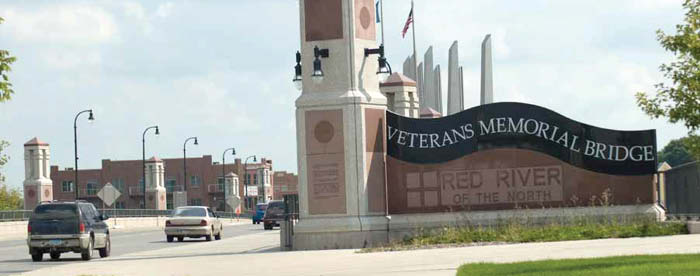As the population of the Fargo/Moorhead metropolitan area increases, so do the needs of the area’s transportation infrastructure. The general public often does not realize the behind-the-scenes work that goes into ensuring a city’s infrastructure grows with its population. One of the organizations that keep the F/M metro area running smoothly is the Fargo-Moorhead Metropolitan Council of Governments, the organization in charge of area wide transportation planning, on both a short and long term basis.
What is the F/M Metro COG?
The F/M Metro COG is the Metropolitan Planning Organization (MPO) for the F/M area. As an organization, Metro COG dates back to March 21, 1963, when the first meeting of the Coordinating Committee for Fargo-Southwest Fargo-Moorhead Metropolitan Area Comprehensive Planning and Traffic Study was held. In 1973, the Governors of North Dakota and Minnesota designated the organization as a MPO in response to 1973 Federal Surface Transportation Act, which required the formation of an MPO for any urbanized area with a population greater than 50,000 people.
Five decades and several name changes after its inception, the Metro COG has its hands full with a population that continues to grow at a substantial rate. Population projects completed as part of Metro COG’s Long Range Transportation Plan (LRTP) indicate the possible addition of 260,000 people to the metro area by the year 2040, an increase of 42%.The LRTP has been titled “Metro 2040: Mobility for the Future,” and will be the driving force behind many of Metro Cog’s future planning decisions, especially in regards to infrastructure needs in both South Fargo and West Fargo. According to Wade Kline, the Executive Director of the Metro COG, the entire I-94 corridor from Veteran’s Boulevard in West Fargo to 8th Street in Moorhead will be a primary focus in years to come.
What does the F/M Metro COG do?
The Metro COG works on behalf of the cities of Fargo, Moorhead, West Fargo, Dilworth, and eight townships in Cass and Clay County. “Our role is to look at long-term transportation needs,” Kline explained. Not only does the Metro COG consider automobile transportation issues, it considers issues related to bicycles and pedestrians, transit systems, and intelligent transportation systems. There are five transit providers in the metro area that receive public funding: Metro Area Transit (MAT) Fixed Route MAT Para-Transit, Valley Senior Services (VSS), Handi-Wheels, and Clay County Rural Transit (currently operated by Productive Alternatives). As society focuses more and more on environmentally friendly transportation, the use of public transit systems will likely increase. As is, over 1.5 million people ride public transportation within the F/M area each year.
Another issue of great concern to the Metro COG is bicycle and pedestrian transportation systems. A 2013 survey by the League of American Bicyclists ranked North Dakota fifty out of fifty for bike friendliness. Minnesota was ranked fourth. The Metro COG is dedicated to improving those figures and making the metro area as bicycle and pedestrian friendly as possible.
The largest area of concern for the organization is automobile transportation and the needs that will accompany a growing population. Between 2007 and 2011, 81.4% of metro residents drove alone, a bit higher than the national average of 76.1%. As the population continues to increase, traffic congestion will become more of an issue. One change that has garnered a great deal of attention is the new interchange that will be constructed in 2016 at the intersection of I-94 and 8th Street South in Moorhead. “We started studying the area in 2006 and identified a number of improvements that were needed,” Kline said. “One of which was to rebuild the interchange.”
Metro COG projects that will be undertaken in 2014 include updating the Long Range Transportation Plan, conducting a study of the Sheyenne Street Corridor from 13th Avenue South to 52nd Avenue South, completing a Metropolitan Area Transportation Plan for Southwest Fargo, and conducting phase two of the Moorhead River Corridor study.
Unified Planning Work Program (UPWP):
The Metro COG is required to adopt and implement and Unified Planning Work Program (UPWP) that covers a 24-month period. The UPWP covers a range of transportation and community planning activities, including data collection, public outreach, and development of programs to coordinate the expenditure of Federal surface transportation funds with the FM Metropolitan Area. The development of the UPWP is done in consultation with the general public, identified interested persons, relevant stakeholders, and the Transportation Technical Committee and is approved by the Metro COG Policy Board.
As the population of the F/M Metro area increases, staying on top of transportation and other infrastructure needs is going to be paramount if the area is going to continue running smoothly. Most people have likely not heard of the Metro COG, but their efforts are utilized by metro residents every day. Whether it is the roads we travel or the bike paths we ride, the work of the Metro COG should be the recipient of our praise. It is because of their hard work and dedication that metro residents are able to get from point a to point b with relative ease.
More information on the Metro COG can be found at www.fmmetrocog.org.


